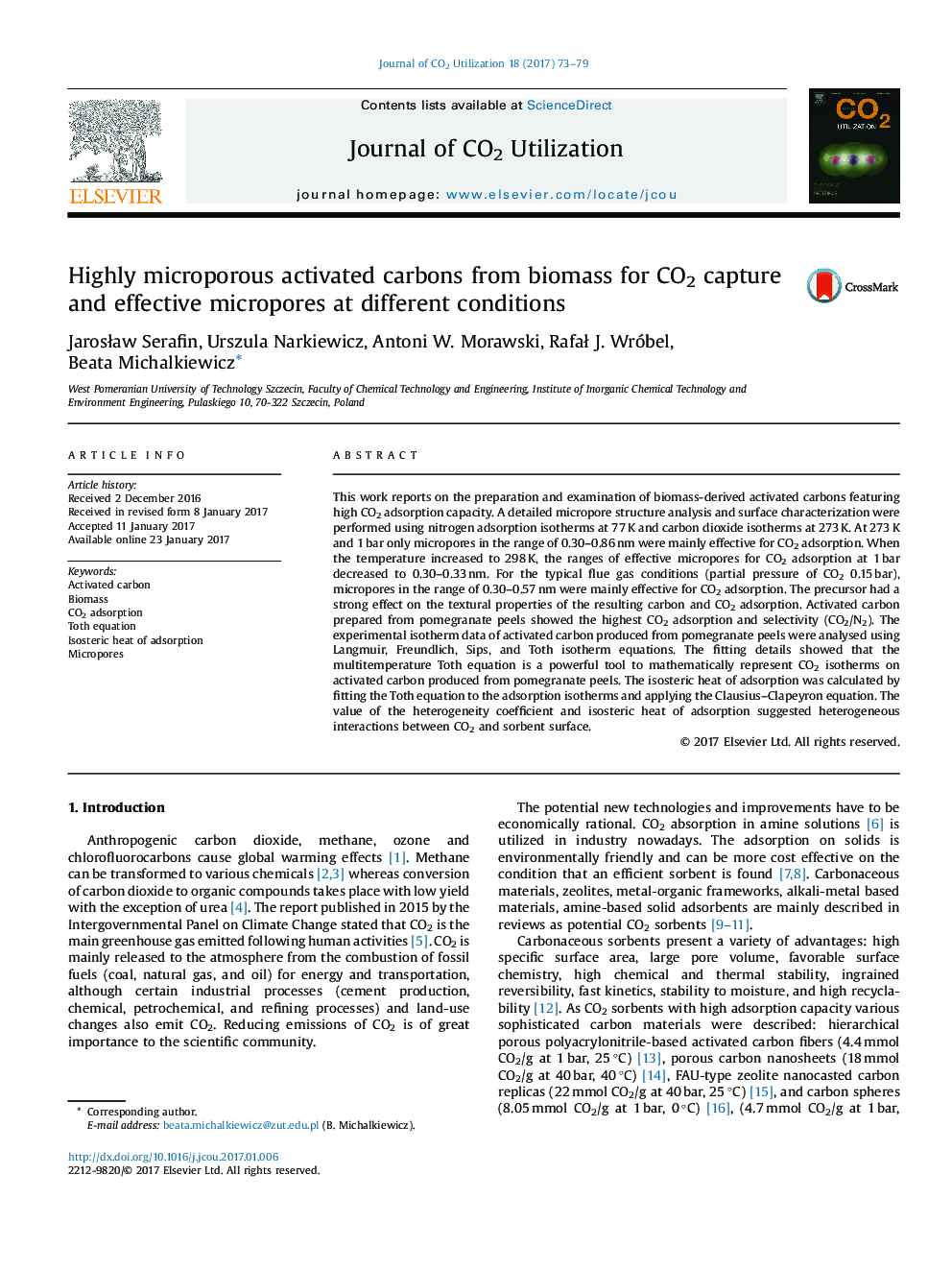| Article ID | Journal | Published Year | Pages | File Type |
|---|---|---|---|---|
| 6456183 | Journal of CO2 Utilization | 2017 | 7 Pages |
â¢Biomass-derived activated carbons with high CO2 uptake are successfully prepared.â¢The highest CO2 capture capacity of 6.03 mmol/g at 273 K and 1 bar is achieved.â¢The highest CO2 capture capacity of 4.18 mmol/g at 298 K and 1 bar is achieved.â¢Micropore range for CO2 uptake at various temperatures and pressures are revealed.
This work reports on the preparation and examination of biomass-derived activated carbons featuring high CO2 adsorption capacity. A detailed micropore structure analysis and surface characterization were performed using nitrogen adsorption isotherms at 77Â K and carbon dioxide isotherms at 273Â K. At 273Â K and 1Â bar only micropores in the range of 0.30-0.86Â nm were mainly effective for CO2 adsorption. When the temperature increased to 298Â K, the ranges of effective micropores for CO2 adsorption at 1Â bar decreased to 0.30-0.33Â nm. For the typical flue gas conditions (partial pressure of CO2 0.15Â bar), micropores in the range of 0.30-0.57Â nm were mainly effective for CO2 adsorption. The precursor had a strong effect on the textural properties of the resulting carbon and CO2 adsorption. Activated carbon prepared from pomegranate peels showed the highest CO2 adsorption and selectivity (CO2/N2). The experimental isotherm data of activated carbon produced from pomegranate peels were analysed using Langmuir, Freundlich, Sips, and Toth isotherm equations. The fitting details showed that the multitemperature Toth equation is a powerful tool to mathematically represent CO2 isotherms on activated carbon produced from pomegranate peels. The isosteric heat of adsorption was calculated by fitting the Toth equation to the adsorption isotherms and applying the Clausius-Clapeyron equation. The value of the heterogeneity coefficient and isosteric heat of adsorption suggested heterogeneous interactions between CO2 and sorbent surface.
